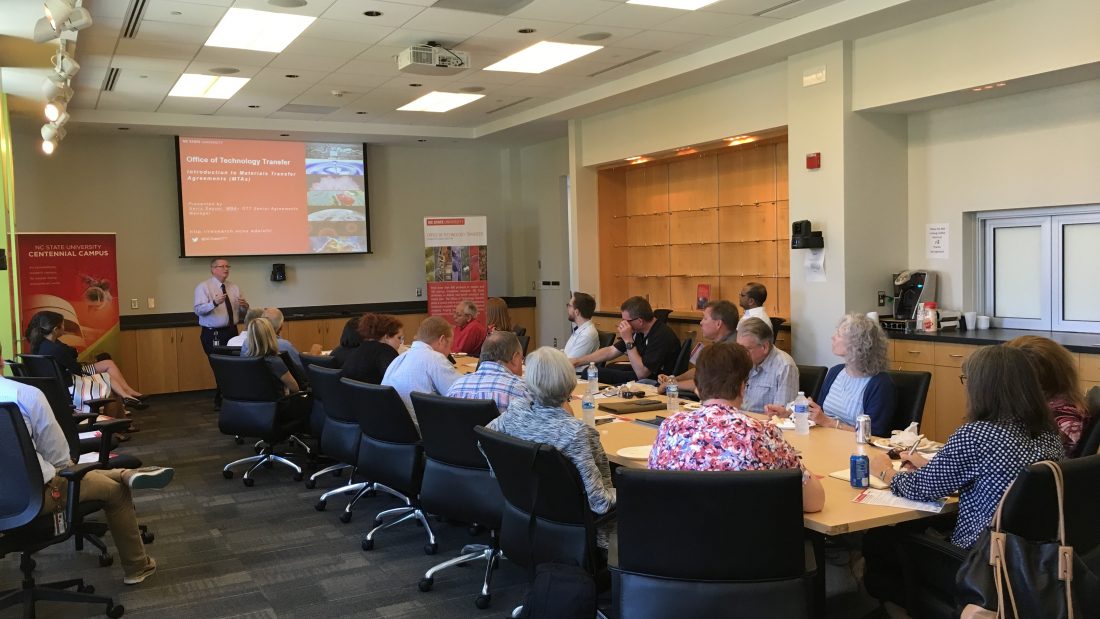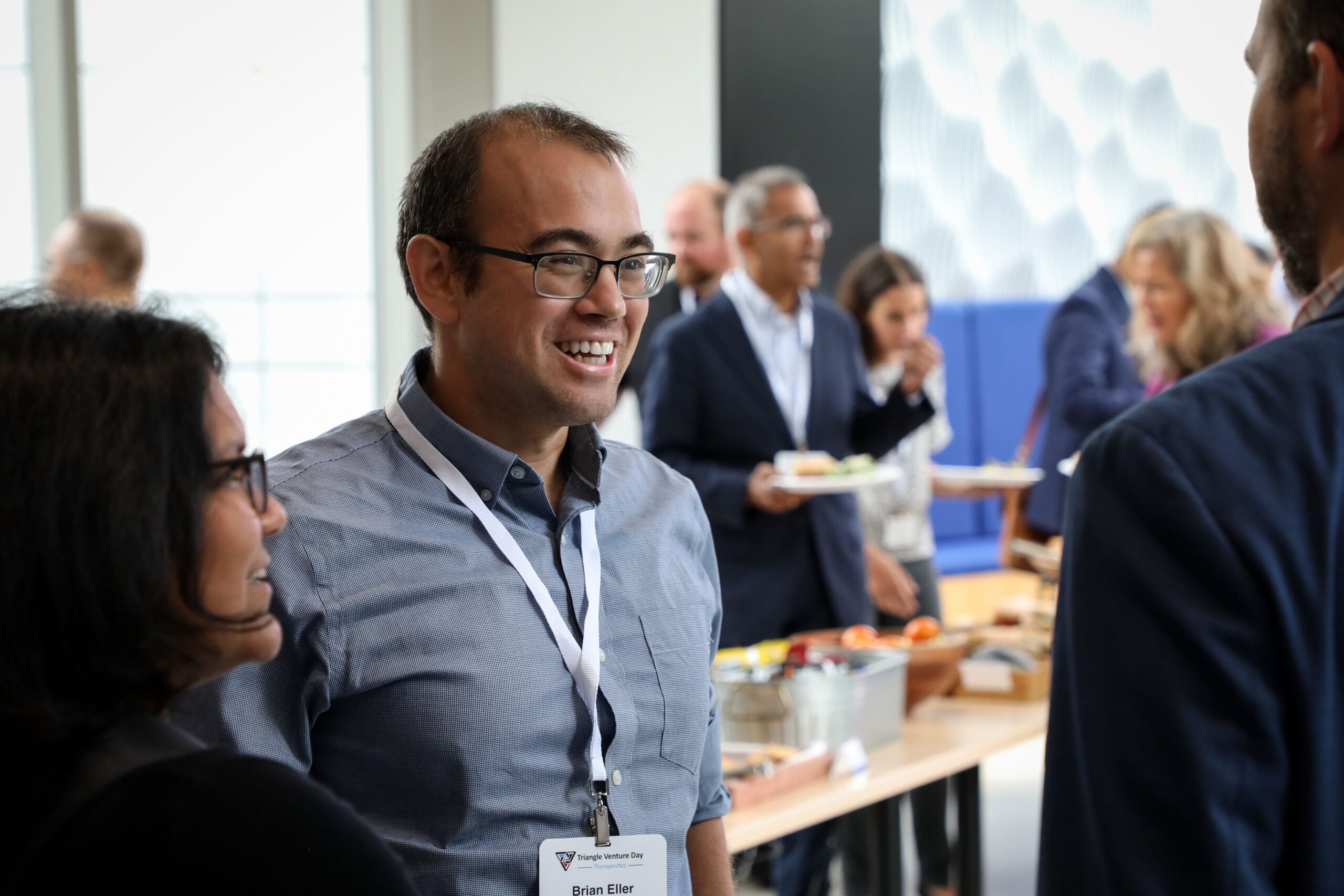Lunch and Learn Recap: Materials Transfer Agreements and Tangible Property Agreements

The Office of Technology Commercialization and New Ventures (OTCNV) recently hosted an informative Lunch and Learn on Materials Transfer Agreements (MTAs) and Tangible Property Agreements for NC State faculty and staff. Topics discussed included the different options provided by the OTCNV for sharing research materials developed at NC State with educational institutions, non-profits, and companies. The session explained Materials Transfer Agreements, their purpose, and the terms included in such agreements. Attendees were introduced to Tangible Property Agreements, and how they allow NC State to license and commercialize materials which do not necessarily require patent protection. Kerafast, a new distributor of University Tangible Materials, was also present to provide an overview of their services.
More information on these topics can be found in the Inventor’s Guide to Technology Transfer (INSERT LINKS).
When do I need to enter into an MTA?
Whenever you intend to exchange materials with other institutions or companies.
Why do I need to enter into an MTA?
To protect your Intellectual Property (IP) rights.
To ensure NC State’s compliance with Federal Laws, State Laws, and University policies.
To limit liability exposure.
To ensure your ability to publish results.
How do I request an MTA?
Send an e-mail requiring assistance with an MTA to mta_cda@ncsu.edu
OTT’s Senior Agreement’s Manager will contact you to complete the appropriate MTA questionnaire.
FAQ
Why is an MTA Questionnaire required?
This information obtained helps us determine:
- If we have ownership of the materials.
- If we can transfer the materials for the requested purpose.
- Whether we are in compliance with NC State Policies and Procedures, State and Federal Laws, and any existing funding agreements.
- How IP developed in the course of the MTA should be managed.
Do I need an MTA to exchange materials with another University?
Yes. These agreements define the materials that are to be sent, who owns the materials (and any modifications thereof), the purpose of use, and addresses liability issues.
When is an MTA considered to be in effect?
The agreement is not considered active or in effect until it has been executed by authorized signatories from both parties.
If you have any questions or issues about any aspects of the MTA negotiation process please contact OTT’s Senior Agreements Manager at mta_cda@ncsu.edu.
Tangible Property License Agreements
What is Tangible Research Material?
Unique research products or tools, such as biological materials or chemical compounds, whether or not patentable. Biological materials include organisms, transgenic animals, plants and plant varieties, cells, cell lines, viruses, cell products, cloned DNA, DNA sequences, nucleic acid and protein sequences.
Who owns Tangible Research Materials?
Tangible Research Materials are classified as Inventions. Inventions are owned by the University if they arise from :
- research conducted using University administered funds, or
- work within the researcher’s scope of employment, or
- substantial use of University resources
Do we need to patent Tangible Research Material in order to commercialize it?
No we do not. Tangible Research Materials can be commercialized under contract law using, for example, a Tangible Property License Agreement.
Why commercialize Tangible Research Materials?
- Make the materials accessible to the public and other researchers.
- Makes use of laboratory materials sitting on the shelf or in the fridge/freezer.
- To generate royalty revenue
Tangible Property Disclosure Process
1. Disclosure
Inventor must disclose the material as a Tangible Research Material Disclosure to the OTT.
If you are unsure about whether to submit a Tangible Property Disclosure or have any questions, please e-mail Catherine Sutton : catherine_sutton@ncsu.edu
2. OTT Review
In consultation with the Inventor, OTT will review the disclosure (i.e. look at ownership, funding, existing patents, market opportunity, etc.) and make a decision on licensing the Tangible Materials.
3. License
If a decision is made to license the Tangible Research Material, OTT will decide on a commercialization path which may involve:
- Licensing to a company that has expressed an interest in the materials.
- Marketing to potential licensees (via website, direct marketing).
- Contacting a distributor to license, market and distribute the Tangible Research Materials.
Master Tangible Property License with Kerafast
NC State has entered into a non-exclusive license agreement with Kerafast to facilitate commercialization of Tangible Research Materials. For more information on this opportunity, please e-mail Catherine Sutton at catherine_sutton@ncsu.edu
- Categories:


